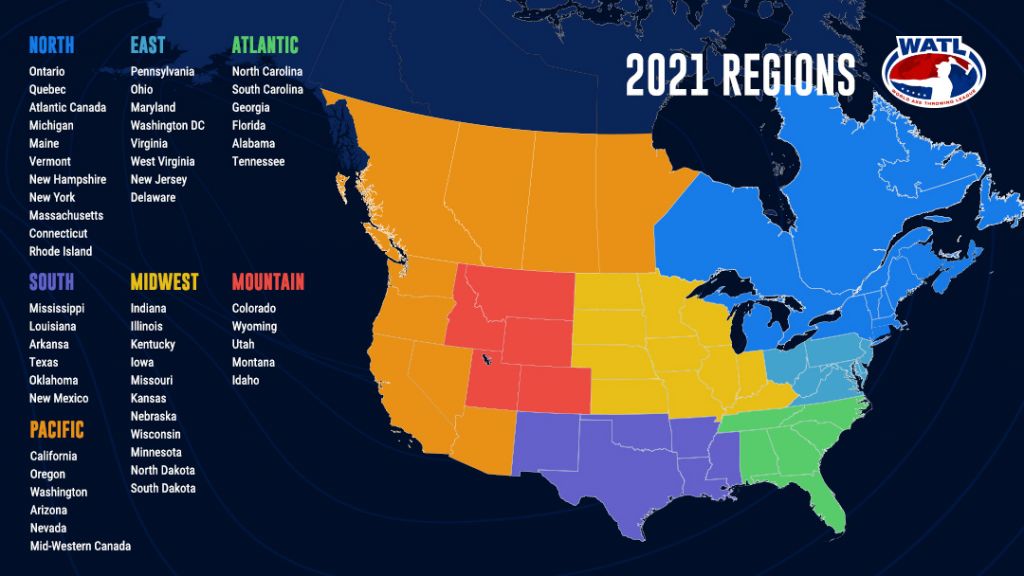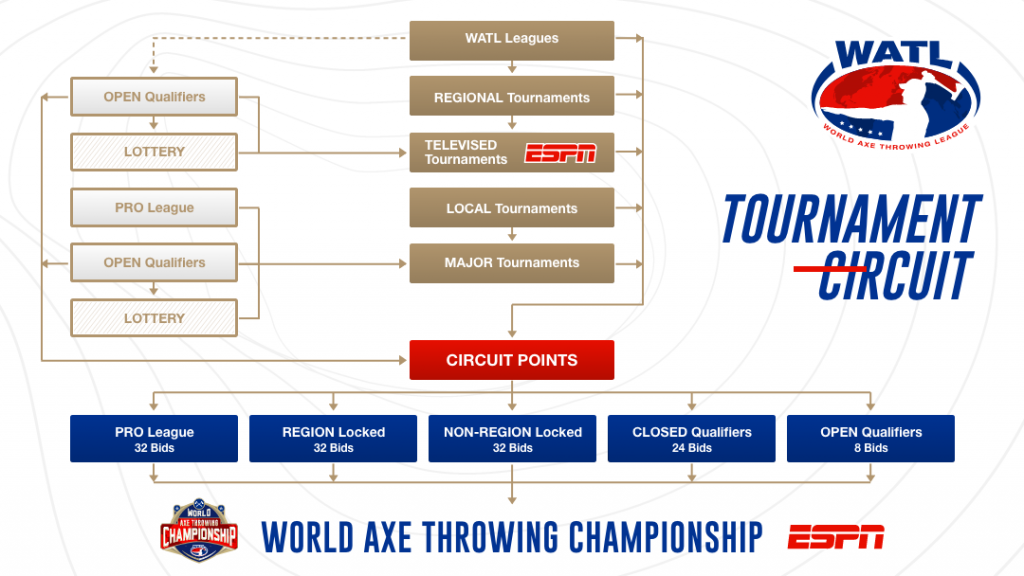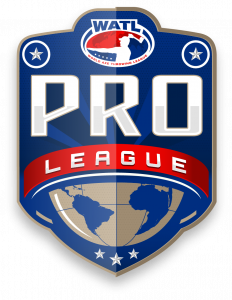Today we announce rule changes and updates heading into the 2021 season. After careful consideration of many different rule changes, the following were ratified as changes to be made at all levels of play heading into next year:
These changes are only a small section of the overall rules and players are obligated to familiarize themselves with the full rules page as always.
Target Change
Addition of the inner bullseye and 5 point ring. Full rule changes can be found under Section C: Scoring and Section H: Targets of the rules page.
- 6 points for the bullseye
- 5 points for the 1st ring (defined as the unmarked area between the bullseye and black ring around bullseye area)
- 4 points for the 2nd ring
- 3 points for the 3rd ring
- 2 points for the 4th ring
- 1 point for the 5th ring
- 8 points for the Killshot
The entire bullseye area (inner red circle and unmarked 5 ring) must be 3.5” inches in diameter inside the center ring. The center of the inner bullseye must be 24” inches (60.96 cm) from the bottom of the board. This should make the center of the bullseye 60″ from the floor.
The inner bullseye (inner red circle) should be 1.5” in diameter, outlined with a black, waterproof pen.
Targets with the inner bullseye and 5 ring design are only required for sanctioned league and tournament play. Venues may leave the entire bullseye (3.5”) for day-to-day, non-league operations.


Open Killshots
Addition of open Killshots during any regular 10 throw match. Full rule changes can be found under Section C: Scoring – Killshot Throw.
- The Killshots are active for any throw during the 10 throw match.
- Before throwing for the Killshot, the player must make clear to the Judge and opponent they intend on throwing for the Killshot.
- This is referred to as “calling the Killshot” and activates it for the full 8 points.
- The player cannot change their call (Killshot or non-Killshot) once a Judge confirms, for that specific throw.
- Players are allowed 2 Killshot attempts per match
- Once a player hits a Killshot during the match, they must alternate left and right killshot for all attempts going forward for the 10 throw match Killshot attempts.
- The first Killshot hit is subsequently closed for the remainder of the match (10 throws).
- If a Killshot is attempted but missed, the player may throw for that Killshot again. Killshots are only closed once hit.
- Does not apply to overtime (OT) throws. Killshots are reopened in OT play.
- Players may start their OT throws utilizing either Killshot, but must continue to alternate Killshots on subsequent OT throws.
- Once a player hits a Killshot during the match, they must alternate left and right killshot for all attempts going forward for the 10 throw match Killshot attempts.
- In the event of a drop at any time, the player may opt to take a 3rd additional Killshot attempt during the regular 10 throw match.
- A drop must be correctly recorded in the app and the match to allow a 3rd Killshot attempt.
- Example: If a player has taken their 2 Killshot attempts and a drop occurs on the 9th throw, they are eligible for a third Killshot attempt on the 10th throw.
- Example 2: If a player has a drop on their 10th throw, they are not eligible for an additional Killshot attempt or throw.
- Previously stated rules regarding alternating Killshot throws will still apply
- A drop must be correctly recorded in the app and the match to allow a 3rd Killshot attempt.
- If the player does not indicate that they are making a Killshot attempt, the Judge will assume it will be a standard throw (a non-Killshot attempt)
- If a Killshot attempt is made prior to a Judge confirming the Killshot call, the throw will be counted as a fault
- If the Killshot is called but the player’s axe does not hit the Killshot, then no points are awarded.
Open Killshots will be valid for Standard throwing only. Duals and Big Axe play will remain as is, with the addition of the new inner bullseye.
Option to Throw Big Axe for Sudden Death
Addition for venues to choose to use a big axe standard hatchet sudden death throws. Full rule changes can be found under Section C: Scoring – Sudden Death.
- In the event of a tie after 10 throws in a single match, the match enters into sudden death.
- Points are not counted or tallied during sudden death.
- Depending on the venue, sudden death/overtime throws will be completed with either a big axe or hatchet
- Venues must determine, at the start of the league season, and announce to League throwers, whether they will be using hatchet or big axe to determine overtime throws
- Venues will not be permitted to change their mind after the first match of the season
- Throwers must abide by the decisions made by the venue
- Venue may, at its sole discretion, provide a house big axe for overtime throws
- Big Axe sudden death throws will not be mandatory for WATL Major & Televised Events for 2021. WATL will gather more data after the Winter 2021 season to make a final decision regarding big axe tie breakers.
- Venues must determine, at the start of the league season, and announce to League throwers, whether they will be using hatchet or big axe to determine overtime throws
- Hatchet Sudden Death
- ONLY Killshots are active during sudden death throws.
- Players will remain at their respective targets for sudden death throws (no switching of targets required).
- Players must alternate Killshots.
- Once the Judge confirms that the lane is open both players must throw within 10 seconds of each other.
- In the event that both players miss the Killshot during Sudden Death, a measuring tape or accurate measuring device, will be used to measure the distance from the closest valid scoring area of the axe head to the closest edge of the Killshot.
- The player with the shortest distance will be awarded the match.
- If Player 1 has an axe that has dropped and Player 2 misses the Killshot, but is on the board, Player 2 will be awarded the match.
- If a player touches their axe before a measurement is made, the match is awarded to the opposing player.
- Big Axe Sudden Death
- Players must start with one or both feet, behind the 17ft mark
- Players may step over the 17ft mark but may not cross the 15ft mark.
- Crossing the 15ft mark is a foot fault and will be scored a zero
- Players feet may not cross the 15ft line until both axes have been verbally scored by the judge. Crossing the 15ft line before the judge scores both axes will result in a foot fault and the player’s throw will be scored a zero.
- If a player calls for a second opinion, both players must return to behind the 15ft line until a final decision has been made.
- Players may step over the 17ft mark but may not cross the 15ft mark.
- On the first sudden death throw, the full scoreboard is open, including Killshots.
- A coin toss will be used to determine who throws first. The presiding Judge will assign heads/tails to the throwers and toss the coin.
- The winner of the coin toss will choose who will throw first.
- If the match is still tied after the first throw, all subsequent throws will be for the Killshot.
- If a venue is limited in space where the can only accommodate one (1) Big Axe thrower at a time, the 10-second rule will apply only after the first thrower has retrieved their axe, is no longer in the lane, and the Judge has cleared the lane and deemed it safe for throwing
- With the exception of the rules related to the first throw for sudden death, all other hatchet sudden death rules apply to Big Axe Killshot sudden death throws.
- Players must start with one or both feet, behind the 17ft mark
Big Axe sudden death option will be applicable for Standard throwing only. Duals sudden death will remain as is.
Expectations for Certified Judges
Clarification regarding expectations of certified judges during league, tournaments, and all WATL sanctioned events. Full rule changes and updates can be found under Section J: Judges.
- Certified Judges:
- At least 1 Certified Judge is required to be present for WATL Leagues or Local Tournaments
- At least 2 Certified Judges are required for Regional tournaments
- At least 3 Certified Judges are required for Major Tournaments
- There must be at least 1 Certified Judge for every lane scored for Televised Tournaments, including the World Championship
- Certified Judges are allowed to participate as throwers but may never score their own matches.
- For Regional, Major or Televised Tournaments, Judges will not take advice, second opinions, or consultation from any throwers.
- Under no circumstances, are Judges allowed to accept advice or consultation from any active thrower in a match.
- Judges are only allowed to take advice or guidance directly from a hosting venue’s owners, tournament runners, or a WATL employed official. Judges found to be heeding the advice of throwers will be asked to concede their lane immediately and undergo a review of their certification.
- Any throwers found to be persuading or advising an official judge will be disqualified immediately and undergo a review of their eligibility for competing the remainder of the year.
- If another judge or thrower believes that a judge is not following current rules and regulations or is making incorrect calls, they must report it directly to a Head Judge or persons in charge of running the tournament immediately.
- Any gross misconduct from Certified Judges may be reported to [email protected]
Circuit Points and Qualifying
Changes and updates of the tournament circuit and qualifying for the World Axe Throwing Championship via circuit points.
Full overview can be found here.


Professional League

Addition of the World Axe Throwing Professional League. Full overview can be found here.
Review The Rules
Get Exclusive Offers & Stay Up-To-Date
Sign-up today and never miss an update in the exciting world of axe throwing.